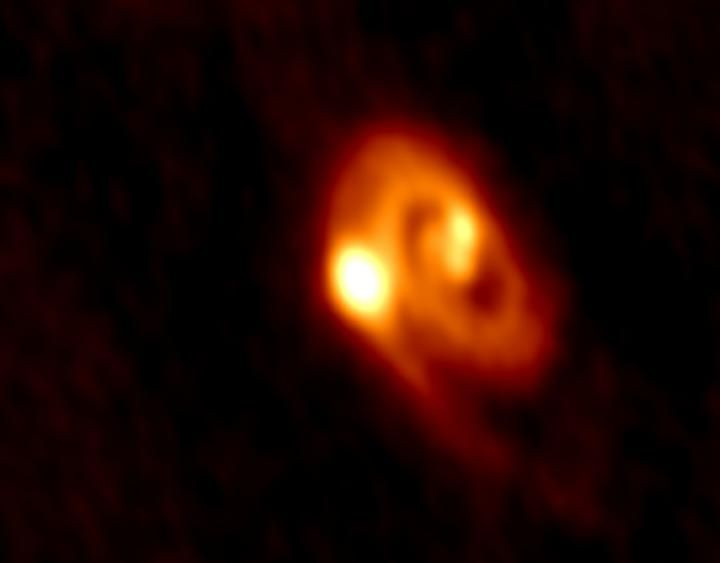Rare Triple-Star System Birth Captured Using ALMA Telescope

What is more spectacular than witnessing the birth of a star? The birth of three stars.
A team of researchers using the Atacama Large Millimeter/submillimeter Array (ALMA) in Chile observed the birth of a triple-star system. This triple protostar system, named L1448 IRS3B, is located in a cloud of gas in the constellation Perseus, roughly 750 light-years from Earth.
“This new work directly supports the conclusion that there are two mechanisms that produce multiple star systems — fragmentation of circumstellar disks, such as we see here, and fragmentation of the larger cloud of gas and dust from which young stars are formed,” John Tobin from the University of Oklahoma and Leiden Observatory in the Netherlands, and the lead author of a study detailing the observations, said in a statement.
Stars form when clouds of gas and dust begin collapsing gravitationally into a dense core, which, once it’s massive enough, begins drawing even more material inward, creating a spinning disk of material around the protostar. Multiple star systems can occasionally form in such conditions, when the spinning material becomes so gravitationally unstable that parts of the disk begin fragmenting and collapsing.
The ALMA observations of L1448 IRS3B marks the first time this process has been directly observed.
“Now, we've seen this disk fragmentation at work,” Tobin said. “We now expect to find other examples of this process and hope to learn just how much it contributes to the population of multiple stars.”
There are two kinds of multiple star systems — one, where all the stars are located close to each other, within about 500 times the Earth-Sun distance, and two, where they are farther apart, more than 1,000 times that distance. In the case of L1448 IRS3B, the most centrally located star is separated from the other two by 61 and 183 times the Earth-Sun distance, and all three are surrounded by a spiral disk.
“This whole system probably is less than 150,000 years old,” co-author Kaitlin Kratter from the University of Arizona said in the statement. “Our analysis indicates that the disk is unstable, and the most widely separated of the three protostars may have formed only in the past 10,000 to 20,000 years.”
© Copyright IBTimes 2025. All rights reserved.






















